Вы здесь
Arpauzen petroglyphs.
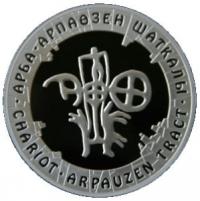
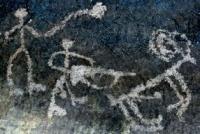
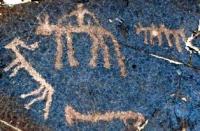
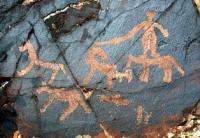
Petroglyphs Tours in Kazakhstan.
“Real-life objects depicted (mirrors, “batons”) have prototypes among cultural artifacts found at Sapalli (Uzbekistan), dated to the first half of the IInd millennium BC. Animal images are also close to toreutic items and figure-casting of pre-historic Bactria and Margiana (Gonur-tepe, Zardcha-Khalifa)”
Trip to Arpauzen petroglyphs.
Rock carvings of the Arpauzen tract are located at an altitude of 800 to 820 meters above sea level, located on the eastern slope of the Syrdarya Karatau ridge, in the interfluve of Sprymsakty and Arpaozen, 4.7 kilometers southwest of the village of Abay, 8.5 kilometers south -east of the village of Taukent, 4.7 kilometers northeast of Mount Kelinshektau, 29 kilometers west and slightly north of the village of Sholakkurgan in the Sozak district of the Turkestan region.
The petroglyphs are grouped along the slopes of the Kok-Bulak gorge along the small and shallow gorges of the Arpauzen tract in the foothills of the Karatau ridge. The drawings date back to the Late Bronze Age, Early Iron Age, XVIII - XIX centuries.
The Arpauzen Complex is located where the rivers Arpauzen, Taskura and Sarymsakty from the Greater Karatau Range join the Chu River Valley. The highest peaks of the Greater Karatau are there (Bessaz Peak, 2,176m and Kelenshetau Peak, 1,796.5m).
Petroglyphs were made on the slopes at the riverside, on reddish-brown and grayish-brown fine-grained sandstones outcrops. They are rarely found on the northern slopes of erosion valleys. Arpa-Uzen is a naturally circumscribed area, a gorge limited by the Karatau mountains in the South, and protected from the northern winds by hills.
Because its favorable climate and landscape, the many suitable rock surfaces, and its position on a corridor of ancient migrations, it has been chosen by ancient inhabitants as a main place for petroglyphs. It houses more than 3500 images, the largest collection In South Kazakhstan.
It constitutes the most important testimony of the culture and way of life of the people inhabiting and crossing the steppes and semi-deserts of the region during the Late Bronze and Early Iron epochs. Their stylistic analysis, compared with the one of other sites, gives information on the centers of formation and ways of diffusion of the pastoralist cultures of the steppes, and on their interchanges with the settled centers of the southern regions.
Images of animals peculiar of steppe shepherds (domestication, harness and sacrifice of camels; horses with fringes analogous to the representations of the Seismino-Tubino bronze castings, etc.) can be detected, together with southern influences from Transoxiana, Zagros mountains and Mesopotamia.
Furthermore, the fact that the petroglyphs of the Iron epoch have been engraved with organic attention on the same surfaces of the Bronze epoch ones, the Saka animal style covering the early styles in such a way to form an indivisible composition and palimpsest, that fact permits the study of the successive unbroken inheritance of the sanctuary, and gives information about the genesis and formation of the culture and arts of the Saka tribes as rooted in the early epochs.
In 1959, Alpysbaev H.A. explored a kurgan burial site in the Taskura Valley; this is the first evidence of archeological sites in the Arpauzen Complex. Arpauzen petroglyphs were discovered in 1970 by Maryashev A.N. and were then researched jointly by Kadyrbaev M.K.(Kadyraev & Maryashev 1977).
They identified 8 groups of petroglyphs, recorded 3,401 images, and developed a first periodization of the images. The most ancient petroglyphs in Arpauzen were dated by them to the Late Bronze Age. Now, it seems possible to date early Arpauzen petroglyphs to the first half of the 2nd millennium BC.
In 2003 - 2004, archeological research at Arpauzen was resumed by Rogozhinskiy A.E. (KazIRP MMC), within the UNESCO CARAD project and in line with the instructions from the Ministry of Culture of the RK. In 2004, a description of the Arpauzen Complex was prepared to file the site for state protection, a baseline documentation was created (archeological map, inventory of sites, indexed panoramas), 17 groups of petroglyphs with 930 surfaces with images were identified, and reconnaissance excavations were done in two settlements.
The total of petroglyphs registered amounts to more than 5,000. In 2002, the Arpauzen petroglyphs were put on the Tentative World Heritage List of UNESCO. Archeological Context. Arpauzen consists of one complex of archeological sites concentrated in a relatively small area of 37.5km2, dated from the Bronze Age to the early XXth century.
A total of 130 archeological sites including 20 settlements and over 80 burial grounds with 17 main concentrations were found. Concentrations of, as well as solitary, Neolithic artifacts were discovered in the piedmont area near springs.
The most ancient researched sites include the Bronze Age settlements of Arpauzen IV and VI. The ceramics are heterogeneous and include fragments of dishware made with a potter’s wheel, of Tautarin type and similar to materials from the Tazabayan settlements in the lower reaches of the Zarafshan River (Gudzhayli) dated to the middle of the 2nd millennium BC.
There are also Kurgan burial sites from the Early Iron Age, medieval ritual fences with statues, remnants of wintering grounds and fortified villages with traces of irrigation channels and cemeteries of the XVIIth – XVIIIth centuries.
Key concentrations of petroglyphs at Arpauzen are located on slopes between two adjacent erosion valleys. In the vicinity of the villages, there is a concentration of petroglyphs with frequent overlapping. A vast majority of petroglyphs are pecked.
Engraved images are sporadic. Possibly, the earliest drawings include a small composition with images of bulls incised and differing in style and technique from Bronze Age petroglyphs. All periods are dominated by images of Bactrian camels, also found at other Karatau sites.
Three series of engravings stand out at Arpauzen. Cases of mutual superimposition of these petroglyphs are very rare, so their chrono-cultural attributions are based on comparisons of style and iconography with other sites.
The earliest petroglyphs, the most obvious, are concentrated on rocks in groups 8, 9 and 10 near the settlements of Arpauzen IV, VI; small series are found in groups 3 and 5. Their varied repertoire includes images of horse, deer, wild ram, goat, dog, longlegged birds (cranes) and humans (bird and Asiatic wild ass hunters, warriors with axes, bows and sticks); there are also four-wheeled carts pulled by horses or camels, mirrors, “labyrinths” and signs. Images of both animals and humans are exquisitely rendered, indicating the volume of three-dimensional models on a two-dimensional surface.
About 100 of these engravings are in groups 5, 7, 9 - 11; some of them are unquestionable masterpieces. Real-life objects depicted (mirrors, “batons”) have prototypes among cultural artifacts found at Sapalli (Uzbekistan), dated to the first half of the IInd millennium BC.
Animal images are also close to toreutic items and figure-casting of pre-historic Bactria and Margiana (Gonur-tepe, Zardcha-Khalifa). These Arpauzen petroglyphs are similar in repertoire, style, and iconography to Bronze Age petroglyphs at Sarmyshsay (Uzbekistan), also characterized by the interaction of steppe tribes and farmers of Central Asia (Avanesova 2002: 17)
To another Bronze Age type belong petroglyphs concentrated in groups 12 and 13 around the Arpauzen IV settlement and sometimes found in groups 11, 14, 16. They are chronologically close to those of type I, but significantly differ from them in repertoire, style and iconography.
They include humans and animals (camels, horses and bulls), carved in a style close to that of petroglyphs at Baykonur (Novozheniv 2002, Table 26, 1а, Tables 31, 14. 4-5) and Terekty-Aulie in the western part of Sary-Arka (Samashev et al. 2000: 7, fig. 1,7).
They reflect the process of Andronovo Culture tribes moving from Central Kazakhstan southwards to oases of Central Asia in the middle of the IInd millennium BC. A series of images at Arpauzen are similar in repertoire and style to Semirechie petroglyphs dated to the Late Bronze Age.
They occur in early palimpsests at Arpauzen and overlie petroglyphs of the two earlier types. Their repertoire also includes images of horse-drawn chariots, coupled humans in an adoration pose, and a bull figure among the animals.
There are few petroglyphs of the Early Iron Age at Arpauzen, but several compositions with large (up to 1m) images of deer, wild boar, and bear in the Saki animal style are remarkable due to their high quality of execution.
Some of them reproduce in detail animal images known from items of Saki applied art in the Near Aral Area and Pamir from the VIIh - VIth centuries BC. The medieval period at Arpauzen is represented by images of camels and riders that often supplement ancient compositions.
he repertoire lacks battle scenes and only a very few images represent riding standard-bearers, typical for rock art of the ancient Turkic epoch in other territories. Along with images of Bactrian camels, one-humped camels begin to be depicted during this period.
A specific feature of Arpauzen petroglyphs is the abundance of Kazakh images dated to the XVIIIth - XXth centuries. The prevailing themes are riders prowess, hunting, pastures or cattle stealing; the weapons only include firearms, with matchlock guns on bipods.
Kazakh petroglyphs and inscriptions of the XIXth - XXth centuries, carved in Arabic, Latin, and Cyrillic occur everywhere in the main locations, predominating near the main trails and roads.
Geographical coordinates of Arpauzen rock paintings: N43°48'28.05" E68°49'43.25"
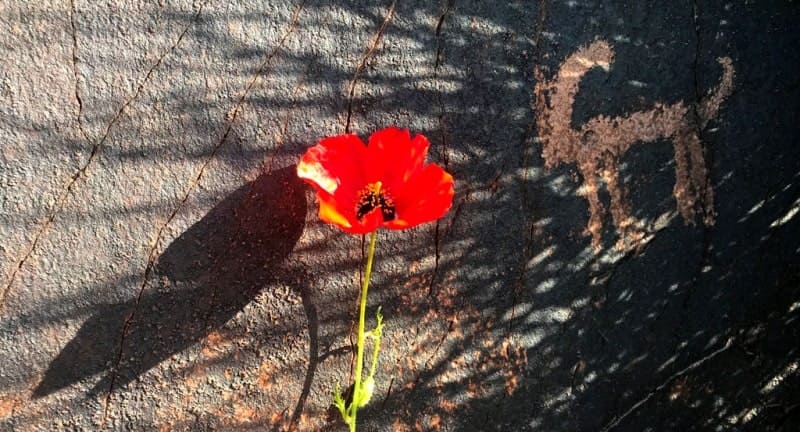
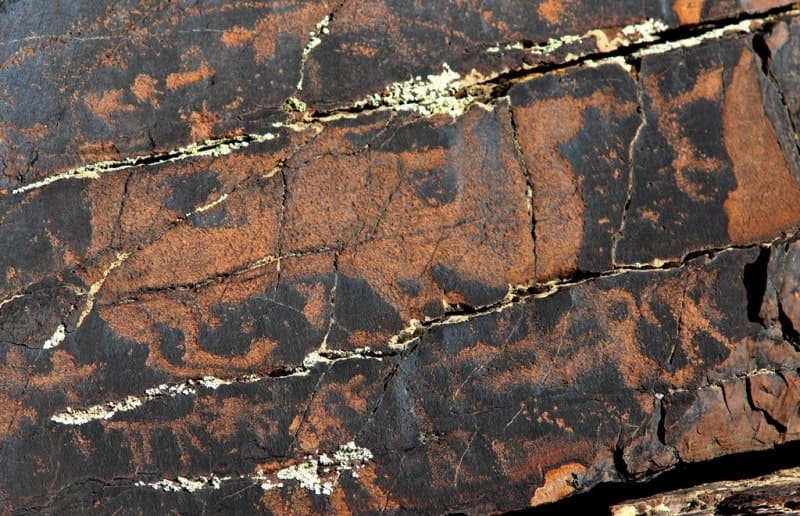
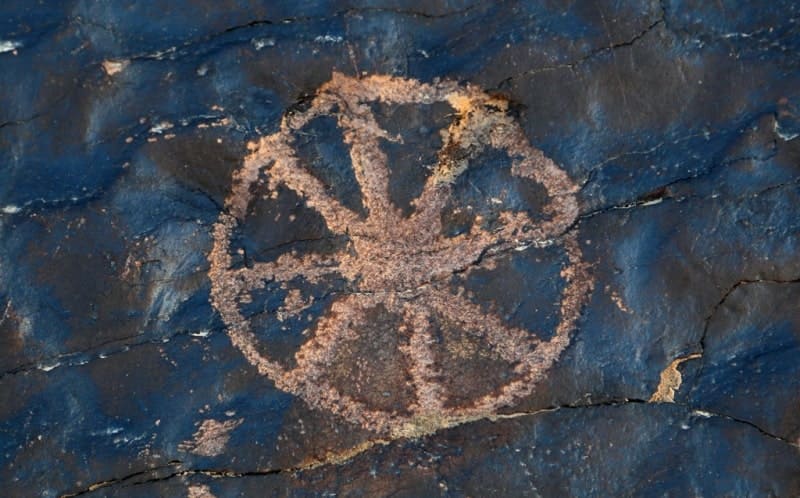

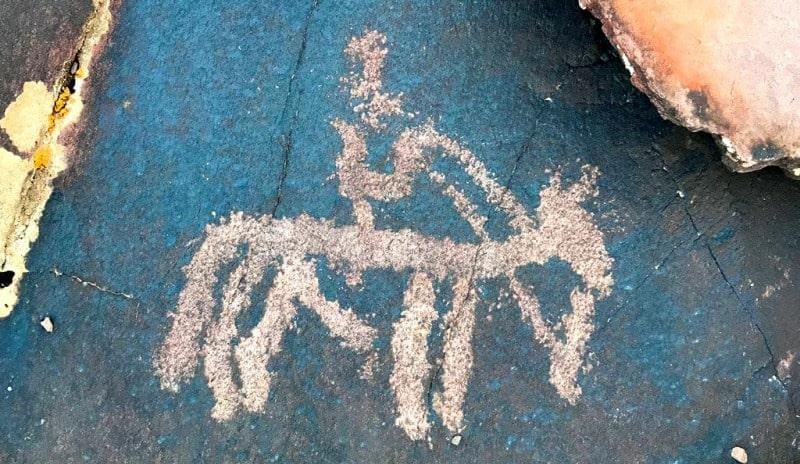
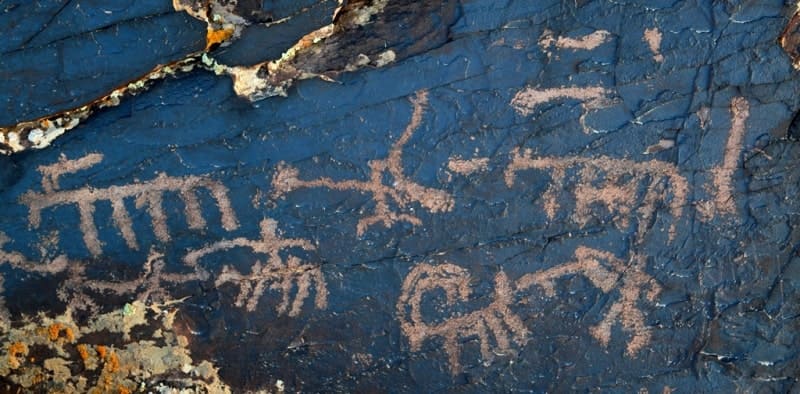
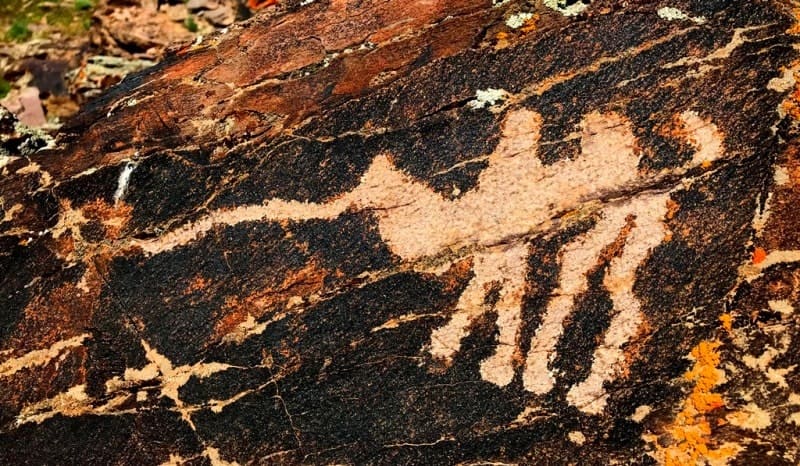
Authority:
“Rock Art Sites in Kazakhstan”. Alexey E. Rogozhinskiy.
Photos by
Alexander Petrov.







